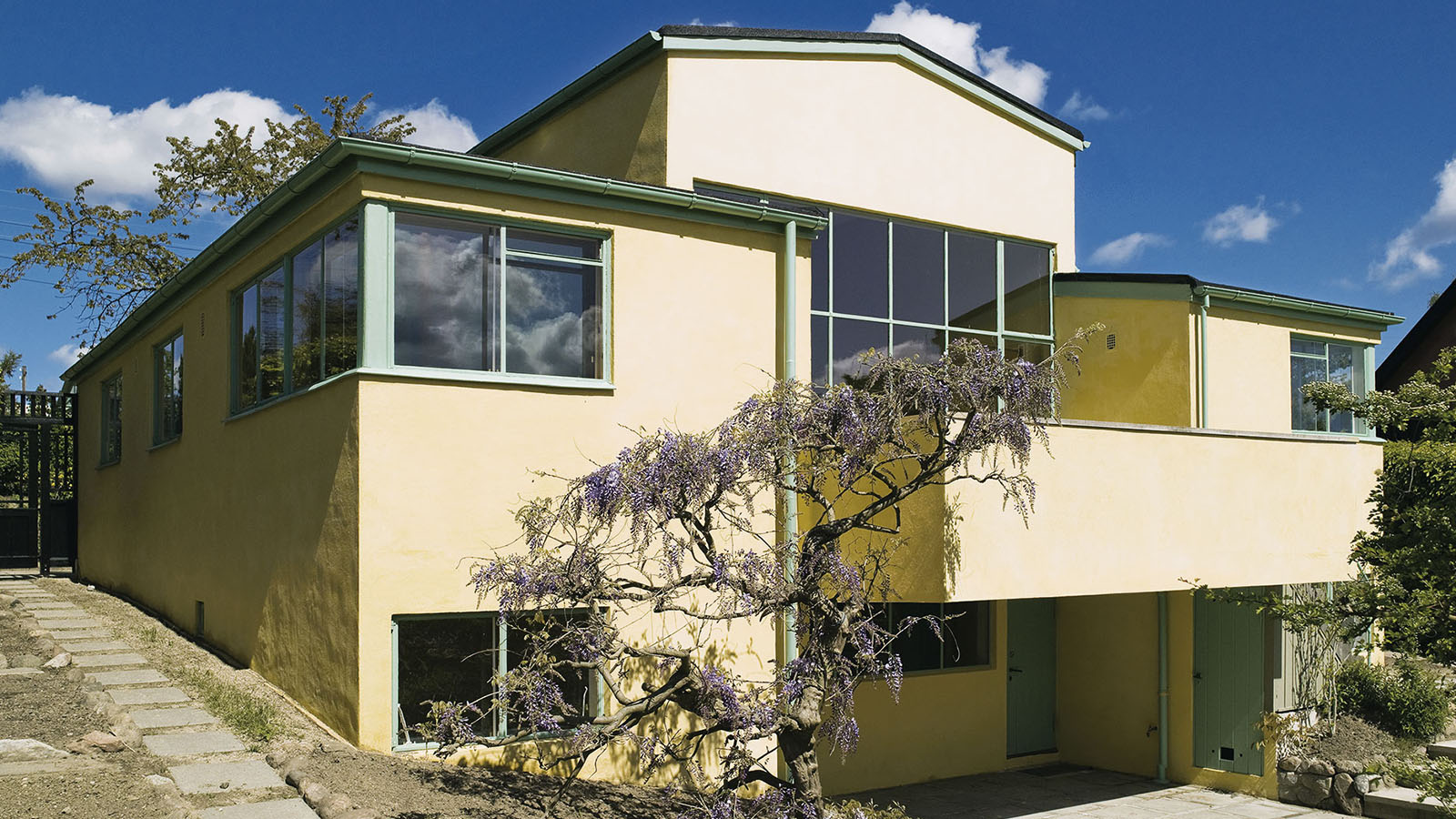Log ind info
From around 1930, most leading Danish architects abjured conventional Neoclassicism for a Modernism which was increasingly inspired by the experiments of the German Bauhaus School in new materials and idioms.
The earliest part of the period is called 'Funkis', a German abbreviation for Functionalism: The idiom may have been new, dispensing with all unnecessary ornament and unnecessary classical ideals such as symmetry and harmony - but the basic materials of tile, brick and wood were still the same, which put a limit to how free the design could be. The constructional principles of the house were fundamentally the same as ever - though roofs became flat, windows bigger and the walls white. Edvard Heiberg's own house and Arne Jacobsen's own house in Charlottenlund are examples of the earlier Modernism, or 'Funkis'.
As the price of reinforced concrete, prefabricated building blocks, laminated timber and float glass suddenly dropped at the beginning of the 1950s, a drastic change in design and materials occurred. The freedom of design which many of these new materials provided was reflected in a similar freedom of individual expression in architects. In the mid-1950s, 'Nordic Modernism' emerged, and chiefly manifested itself in the design of single-family dwellings, later developing into the archetypal detached single-family house, the standard house, seen on present-day Danish housing estates. Realdania Byg's collection of properties includes a number of the most influential Danish architects' homes and holiday homes from this period.
